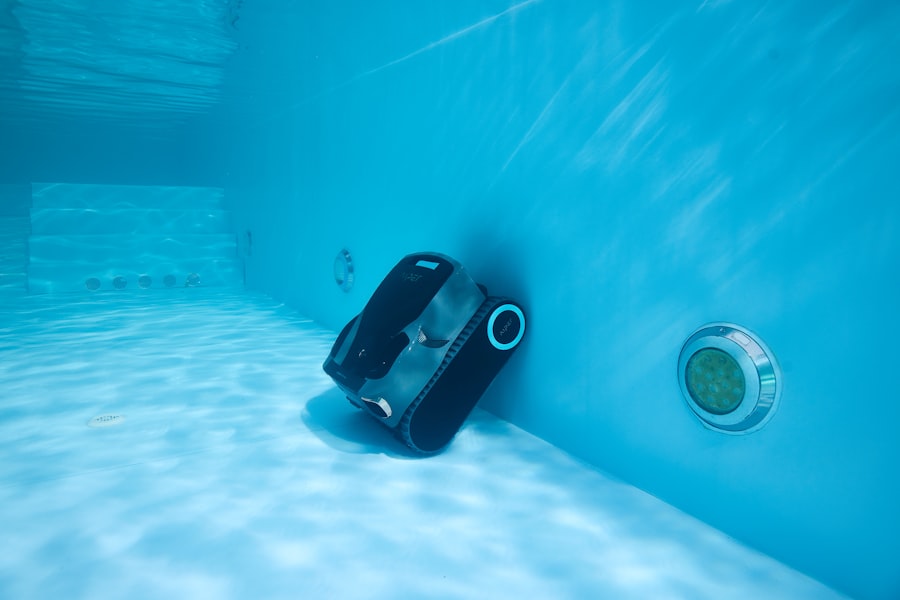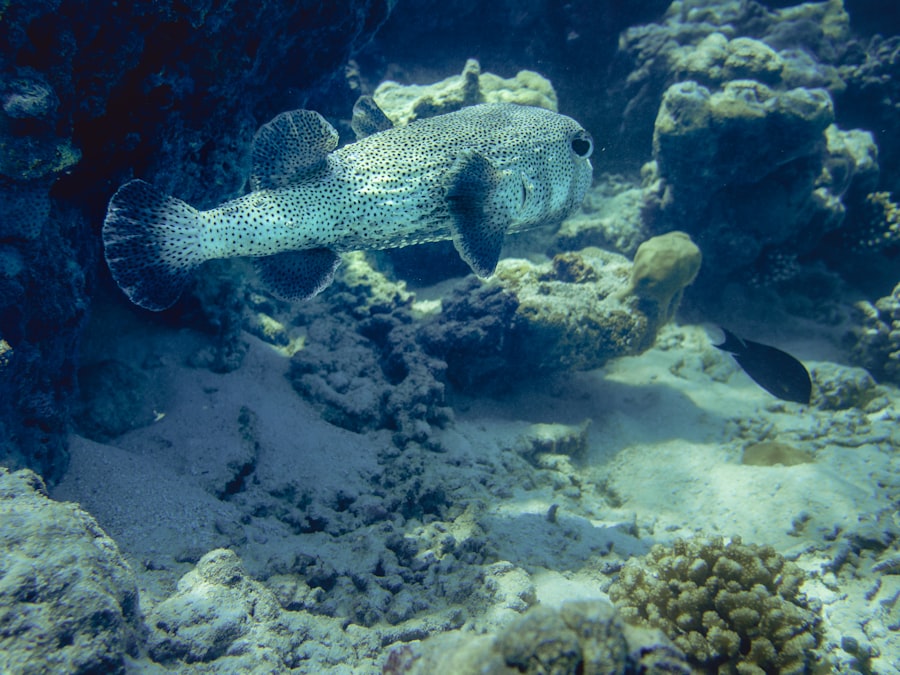The emergence of Autonomous Underwater Vehicles (AUVs) marks a significant milestone in marine technology, revolutionizing the way underwater exploration and data collection are conducted. These sophisticated machines, equipped with advanced sensors and artificial intelligence, have gained traction in various sectors, including scientific research, military operations, and commercial industries. The development of AUVs can be traced back to the late 20th century, but it is in recent years that their capabilities have expanded dramatically.
With improvements in battery life, navigation systems, and data processing, AUVs are now capable of undertaking complex missions that were once deemed impossible. As the demand for underwater exploration grows, so does the investment in AUV technology. Governments and private companies alike are recognizing the potential of these vehicles to gather critical data from the ocean depths.
From mapping the seafloor to monitoring marine ecosystems, AUVs are becoming indispensable tools for researchers and industry professionals. Their ability to operate autonomously allows them to cover vast areas without the need for human intervention, making them an efficient solution for tasks that require precision and endurance. This rise in popularity is not merely a trend; it signifies a fundamental shift in how humanity interacts with the underwater world.
Key Takeaways
- Autonomous Underwater Vehicles (AUVs) are on the rise, with increasing use in various industries and applications.
- AUVs are being used for tasks such as oceanographic research, underwater mapping, pipeline inspection, and military operations.
- Potential risks and threats posed by AUVs include unauthorized access, data breaches, and potential use in terrorist activities.
- AUVs can have environmental impacts such as disturbance to marine life and potential pollution from battery disposal.
- National security concerns surrounding AUVs include their potential use in espionage, sabotage, and disrupting undersea communication cables.
How Autonomous Underwater Vehicles are Being Used
The applications of AUVs are as diverse as the oceans they explore. In scientific research, these vehicles are employed to study marine life, ocean currents, and geological formations. Researchers utilize AUVs to collect data on temperature, salinity, and other environmental parameters, which are crucial for understanding climate change and its impact on marine ecosystems.
By deploying AUVs in remote or difficult-to-access areas, scientists can gather valuable information without disturbing the delicate balance of underwater habitats. In addition to scientific endeavors, AUVs are increasingly being used in commercial sectors such as oil and gas exploration. These vehicles can conduct surveys of underwater pipelines and infrastructure, ensuring their integrity and safety.
The ability to operate in challenging conditions makes AUVs an attractive option for companies looking to minimize risks associated with underwater operations. Furthermore, the military has recognized the strategic advantages of AUVs for reconnaissance and surveillance missions. Their stealthy nature allows them to gather intelligence without detection, providing a significant edge in naval operations.
Potential Risks and Threats Posed by Autonomous Underwater Vehicles

Despite their numerous benefits, the rise of AUVs is not without its challenges. One of the primary concerns surrounding these vehicles is the potential for misuse or malicious intent. As AUV technology becomes more accessible, there is a growing risk that they could be employed for nefarious purposes, such as espionage or sabotage.
The ability to operate autonomously means that these vehicles could be programmed to carry out tasks without human oversight, raising alarms about accountability and control. Moreover, the presence of AUVs in sensitive marine environments poses risks to both human safety and ecological balance. Accidental collisions with marine life or underwater structures could lead to catastrophic consequences.
Additionally, the deployment of AUVs in contested waters could escalate tensions between nations, as countries may perceive them as threats to their sovereignty. The potential for conflict underscores the need for comprehensive regulations governing the use of AUVs in international waters.
Environmental Impact of Autonomous Underwater Vehicles
| Metrics | Data |
|---|---|
| Energy Consumption | Measured in kilowatt-hours (kWh) |
| Carbon Emissions | Measured in kilograms of CO2 |
| Noise Pollution | Measured in decibels (dB) |
| Waste Generation | Measured in kilograms |
The environmental implications of AUV deployment are multifaceted and warrant careful consideration. On one hand, these vehicles can contribute positively to environmental monitoring efforts by providing critical data on ocean health and biodiversity. For instance, AUVs can be used to track changes in coral reef ecosystems or monitor the effects of pollution on marine life.
This data is invaluable for conservation efforts and can inform policy decisions aimed at protecting fragile marine environments. Conversely, the operation of AUVs can also have detrimental effects on marine ecosystems. The noise generated by these vehicles can disrupt communication among marine species, particularly those that rely on sound for navigation and mating.
Additionally, the physical presence of AUVs in sensitive habitats may lead to disturbances that could harm local wildlife. As such, it is essential for researchers and operators to implement best practices that minimize the ecological footprint of AUV operations while maximizing their potential benefits.
National Security Concerns Surrounding Autonomous Underwater Vehicles
The strategic implications of AUV technology extend into the realm of national security. As nations invest in developing their own fleets of AUVs for military purposes, concerns arise regarding the potential for an arms race in underwater warfare capabilities. The stealthy nature of these vehicles makes them ideal for covert operations, leading to fears that they could be used for surveillance or even offensive actions against other nations.
Furthermore, the proliferation of AUV technology raises questions about cybersecurity vulnerabilities. As these vehicles become more interconnected and reliant on software systems, they may become targets for cyberattacks aimed at compromising their functionality or hijacking their missions. The potential for hostile entities to gain control over AUVs poses a significant threat not only to national security but also to global stability.
Addressing these concerns requires a concerted effort from governments and international organizations to establish protocols that safeguard against misuse.
Legal and Regulatory Challenges in Controlling Autonomous Underwater Vehicles

The rapid advancement of AUV technology has outpaced existing legal frameworks designed to govern their use. Current maritime laws often fail to address the unique challenges posed by autonomous systems operating underwater. Issues such as liability in case of accidents or damage caused by AUVs remain largely unresolved, creating a legal gray area that complicates accountability.
Moreover, international regulations governing maritime activities must evolve to encompass the complexities introduced by AUVs. The United Nations Convention on the Law of the Sea (UNCLOS) provides a foundation for maritime governance but may require amendments to address the specificities of autonomous vehicles. Establishing clear guidelines for the operation of AUVs in international waters is crucial to prevent conflicts and ensure responsible usage.
The Role of Technology in Mitigating Autonomous Underwater Vehicle Threats
Advancements in technology play a pivotal role in addressing the challenges associated with AUVs. Enhanced tracking systems and communication protocols can help monitor AUV movements and ensure compliance with established regulations. By integrating real-time data sharing among operators and regulatory bodies, stakeholders can maintain oversight over AUV activities and mitigate potential risks.
Additionally, incorporating artificial intelligence into AUV design can improve decision-making processes during missions. AI algorithms can enable these vehicles to adapt to changing environmental conditions or avoid obstacles autonomously, reducing the likelihood of accidents or unintended consequences. As technology continues to evolve, it will be essential for developers and operators to prioritize safety features that enhance the reliability and accountability of AUV operations.
International Collaboration and Cooperation in Addressing Autonomous Underwater Vehicle Threats
Given the global nature of maritime activities, addressing the challenges posed by AUVs necessitates international collaboration. Countries must work together to establish common standards and best practices for AUV deployment, ensuring that these vehicles are used responsibly and ethically across borders. Collaborative efforts can also facilitate information sharing regarding potential threats or incidents involving AUVs.
Forums such as the International Maritime Organization (IMO) provide platforms for discussing regulatory frameworks and promoting cooperation in maritime safety. By engaging stakeholders from various sectors—including government agencies, industry representatives, and environmental organizations—countries can develop comprehensive strategies that address both security concerns and environmental protection.
The Need for Increased Surveillance and Monitoring of Autonomous Underwater Vehicles
As AUV technology continues to proliferate, there is an urgent need for enhanced surveillance and monitoring systems to track their movements effectively. Implementing robust tracking mechanisms can help authorities identify unauthorized or suspicious activities involving AUVs in sensitive areas. This increased oversight is essential not only for national security but also for safeguarding marine ecosystems from potential harm caused by unregulated operations.
Moreover, investing in research and development of advanced monitoring technologies can improve situational awareness regarding AUV activities. Satellite-based tracking systems or underwater acoustic sensors could provide real-time data on AUV locations and movements, enabling timely responses to any emerging threats or incidents. By prioritizing surveillance efforts, stakeholders can better manage the risks associated with autonomous underwater vehicles while maximizing their benefits.
Potential Scenarios of Autonomous Underwater Vehicle Misuse
The potential misuse of AUV technology presents a range of scenarios that could have far-reaching consequences. One alarming possibility involves hostile entities deploying AUVs for espionage purposes—gathering intelligence on naval operations or critical infrastructure without detection. Such actions could escalate tensions between nations and lead to diplomatic crises.
Another concerning scenario involves the use of AUVs as delivery systems for harmful payloads—whether biological agents or explosives—targeting vulnerable maritime assets or coastal facilities. The stealthy nature of these vehicles makes them particularly suited for covert operations that could evade traditional security measures. As such threats become more plausible with advancements in technology, it is imperative for governments to develop proactive strategies aimed at preventing such misuse.
Strategies for Managing and Controlling Autonomous Underwater Vehicle Threats
To effectively manage the risks associated with AUVs, a multifaceted approach is necessary—one that encompasses regulatory frameworks, technological advancements, and international cooperation. Establishing clear guidelines governing the operation of AUVs is essential for ensuring accountability among operators while minimizing potential threats. Furthermore, investing in research focused on developing secure communication protocols can help mitigate cybersecurity risks associated with AUV operations.
Finally, fostering international collaboration will be crucial in addressing shared challenges posed by autonomous underwater vehicles. By working together to establish common standards and best practices, countries can promote responsible usage while safeguarding against potential threats—ultimately ensuring that this transformative technology serves humanity’s interests rather than undermining them.
Autonomous underwater vehicles (AUVs) have become a focal point of concern in modern naval warfare, as their capabilities can pose significant threats to maritime security. For a deeper understanding of the implications of AUV technology and its potential risks, you can read the article on this topic at In the War Room. This article explores the strategic challenges posed by AUVs and their impact on naval operations.
WATCH THIS! The Secret Russian Weapon That Terrifies NATO
FAQs
What is an autonomous underwater vehicle (AUV)?
An autonomous underwater vehicle (AUV) is a robot that travels underwater without requiring input from an operator. AUVs are used for various purposes, including oceanographic research, underwater mapping, and military applications.
What are the potential threats posed by autonomous underwater vehicles?
Autonomous underwater vehicles can pose threats in various ways, including potential use for espionage, sabotage, or attacks on maritime infrastructure. They can also be used for the placement of explosive devices or for conducting covert surveillance.
How are autonomous underwater vehicles being used for military purposes?
Military forces around the world are increasingly using autonomous underwater vehicles for tasks such as mine detection, intelligence gathering, and reconnaissance. AUVs can also be used for covert delivery of weapons or other payloads.
What measures are being taken to address the potential threats posed by autonomous underwater vehicles?
Efforts are being made to develop technologies for detecting and neutralizing rogue AUVs. Additionally, regulations and international agreements are being considered to govern the use of AUVs in order to mitigate potential threats.
What are some examples of incidents involving autonomous underwater vehicles?
There have been reports of AUVs being used for espionage and surveillance in sensitive maritime areas. Additionally, there have been concerns about the potential for AUVs to be used for attacks on underwater infrastructure or military vessels.




